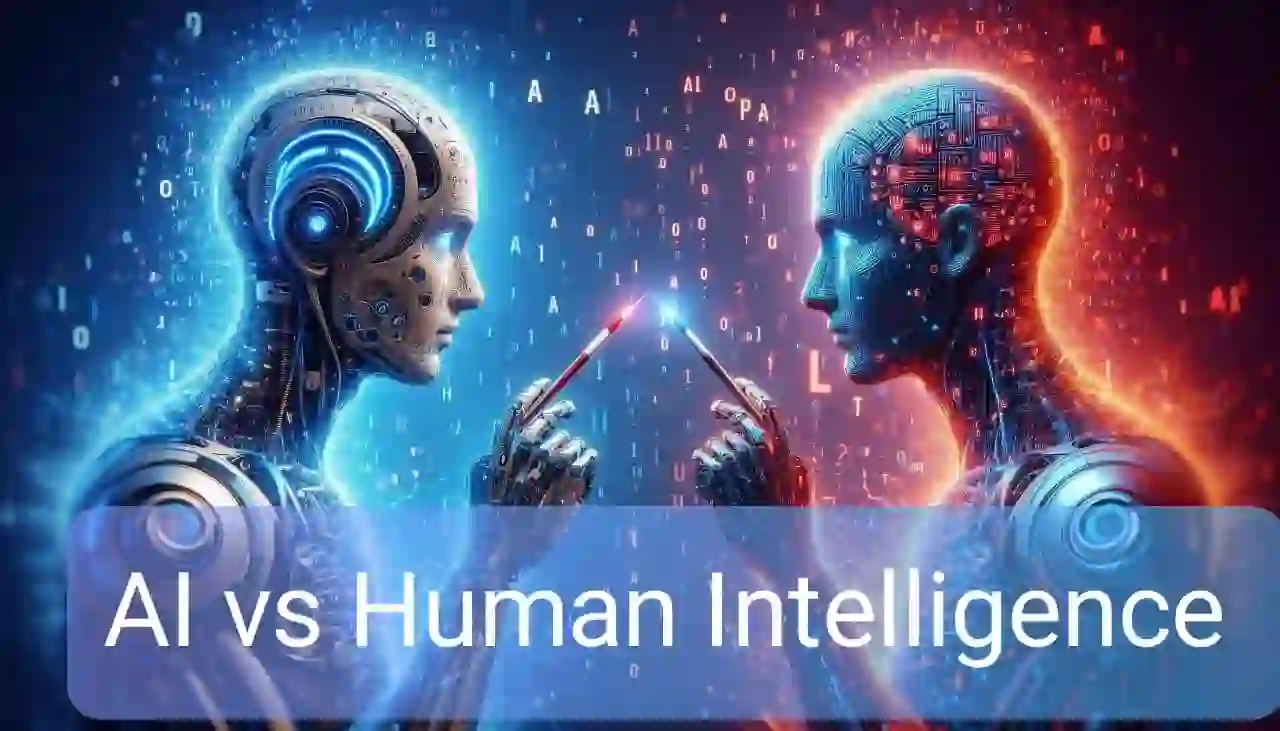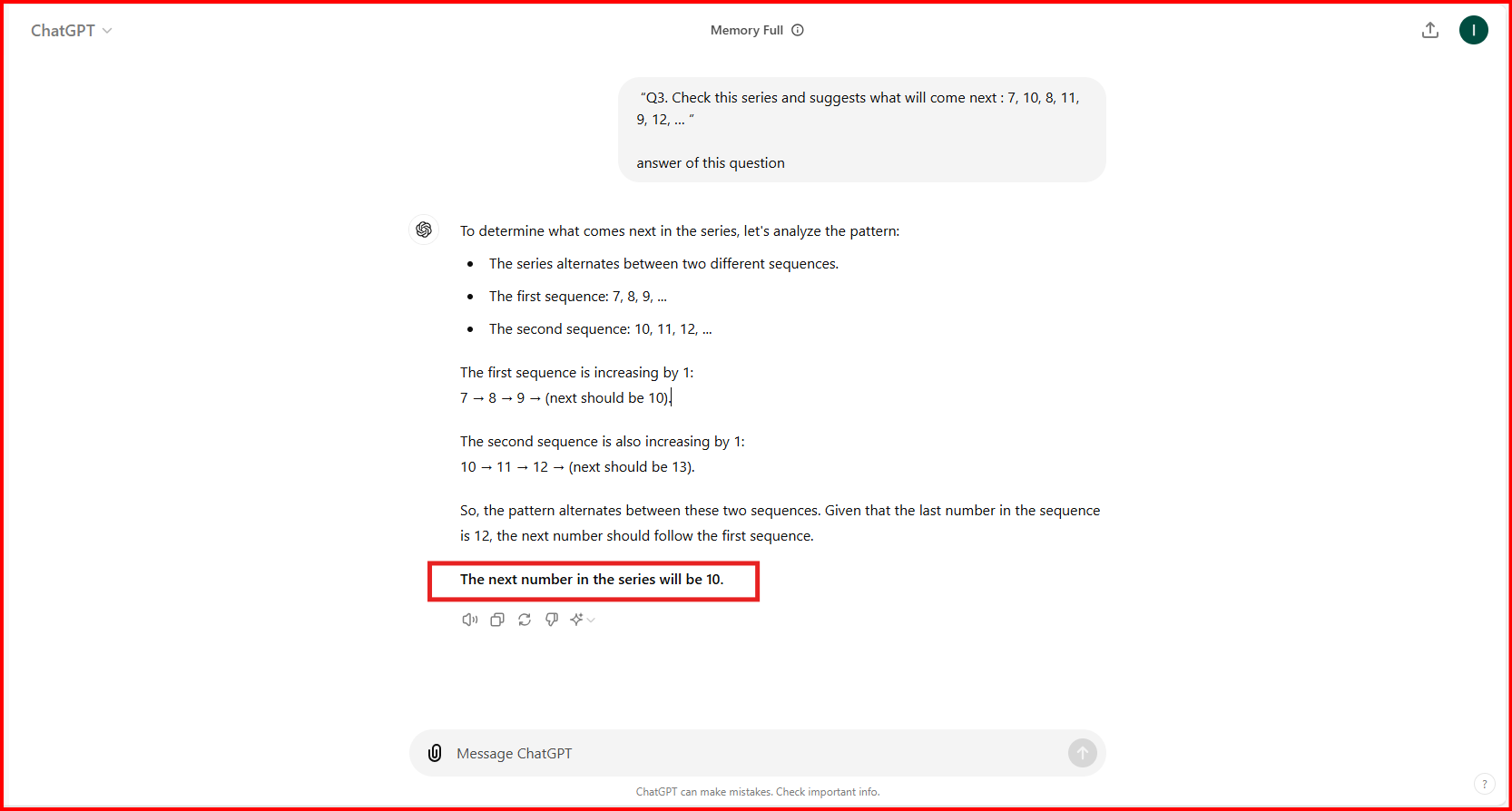
Technology is advancing day by day, in today’s world everyone is talking about Artificial intelligence, and people and companies are using AI to do various tasks which include various sectors and fields such as Education, Finance, Healthcare, Real estate, Transportation, retail, Manufacturing, entertainment, Agriculture, Customer Service, Security and more.
This article explores and compares Artificial intelligence with Human intelligence. This will include the History of AI, the Father of AI, what is AI with examples, AI Trending Tools, and the Future of AI.
What Is Artificial Intelligence?
Artificial Intelligence is a field of computer science where engineers and scientists train machines and computer systems like human intelligence, AI is developed using large amounts of data sets and various technologies such as Deep Learning, Natural Language Processing (NLP, Computer vision, and Machine Learning, the main reason behind the AI is is to building machine so that can act, think and behave like a human, AI can understand the natural language and reasoning and solve problems.
In simpler terms, artificial Intelligence can think and act like a human in various situations. For example, if you want to solve a below reasoning question, AI can think like you and solve it within seconds
Question: “Q3. Check this series and suggest what will come next: 7, 10, 8, 11, 9, 12, … ”
AI answer:

Types of Artificial intelligence with examples
Mainly Artificial intelligence is divided into three Categories Narrow AI, General AI, and Superintelligence.
Narrow AI: This AI is developed to perform some specific tasks such as virtual assistants like Alexa and Siri, and recommendation systems like Netflix and Amazon, Image recognition.
General AI: This AI can solve a wide range of problems like human intelligence, by understanding, learning the pattern, and applying logic to get a result, for example, chatbots human give prompts, and analyze and answer the query like humans.
Superintelligence: This AI is a type of hypothetical AI, in the future, it may surpass human intelligence in every aspect such as creativity and social skills, For Example, you must watch a fictional movie Robot, in this movie robot named Chitti has a superintelligence.
History of Artificial Intelligence
The history of artificial intelligence started in the 20th century, many philosophers and scientists gave theories of how human thinking is termed as a logical representation in machines.
- 1950s: This era is known as the birth of AI, a British mathematician named Alan Turing gave the idea that even machines can think, and he developed a test known as the Turing test machine can represent intelligence like a human, A conference organized by the John McCarthy in 1956 is official as the birth of AI and he is known as the father of Artificial intelligence.
- 1960s-1970s: In this era, scientists developed multiple AI programs that could solve problems like chess games but programs were very limited and could only handle a few specific tasks.
- 1980s-1990s: In this era, computer scientists developed expert systems that could help in medical diagnoses, but in that period systems were limited due to a lack of computing power and expectations.
- 2000s-Present: This era of technology became the rise of Artificial intelligence, computers are processing vast amounts of data daily with the use of this data Artificial Intelligence systems are more intelligent and can solve problems very less time, and Tools like chat ChatGPT, solve mathematical problems in seconds and voice assessment like Alexa can do the task on voice commands.
Artificial Intelligence Tools
In the current time many AI tools have appeared in the market that can do various tasks like humans, below are the Top 10 Artificial Intelligence Tools:-
- ChatGPT: ChatGPT full form is Chat Generative Pre-Trained Transformer, developed by OpenAI in Nov-2023, this is a large language model that can generate text like humans and solve problems supporting both prompts text and voice.
- Gemini: Gemini previously known as Bard, is also like a ChatGPT which generates the content on user prompts and explains the details based on multimodal AI reasoning.
- Microsoft Copilot: Microsoft Copilot is a chatbot powered by the GPT 4 Turbo, which can do the same task as Chatgpt and Gemini.
- Claude: This Artificial language model was developed by the Anthropic, this tool mainly focuses on safety and reliability while generating the responses.
- Jasper AI: This AI tool is designed to help generate content for Marketing, Blogging, and Social Media posts.
- Writesonic: As the name suggests writesonic is an AI content writing tool that includes blog posts, articles, and advertisements, it can be a good tool for the people who doing the marketing.
- Replika: Replika is also another AI tool designed to give an emotional touch in conversation.
- Copy.ai: The Copy.Ai tool is like a gift for the business which generates marketing-related text such as Product descriptions and social media content and minimizes the business effects.
- GPT-3 Playground: This AI tool is developed by OpenAi for users who can experiment with GPT 3 playgrounds like generating text, coding, and answering questions.
- Poe by Quora: POE is an AI chatbot which is developed by Quora where People ask questions and and other people post their answers POE chatbot suggests the answer automatically and helps people to write more accurate questions.
Human Intelligence vs. Artificial Intelligence
Now understand and compare human intelligence with Artificial intelligence both have their abilities and limitations.
1. Learning and Adaptation
- Human Intelligence: humans learn from experiences and adapt things from them and apply them in real life, for example, a player can learn how to play Football, but to improve his game he can practice with different techniques.
- Artificial Intelligence: Artificial intelligence models are developed using a large amount of data sets and they use algorithms for decision-making, they can be trained to recognize patterns and solve problems, but AI models are not capable of applying knowledge by themselves where they depend on data.
2. Emotions
- Human Intelligence: Humans have emotions and self-awareness knowledge and while answering any question human can change themself based on the situation, for example, if a person is sad then another human can emphasize him personally by their experiences.
- Artificial Intelligence: AI does not have emotions and self-awareness but AI can simulate human intelligence and provide responses like humans, it cannot feel and understand emotions, For example, if you ask ChatGPT chatbot for a sad message it can generate from data but does not know the actual situation of human.
3. Creativity
- Human Intelligence: Humans are creative learn from practices and use their minds for new things like writing poems, composing music, and Inventing new technology even AI is a human technology-based creativity.
- Artificial Intelligence: AI also can write a poem, and generate music, and drawings by using various patterns and algorithms learned from data model training, but compared to humans it cannot think out of the box and cannot create things like humans, it is based on the existing data model, if the data model not updated time then are not able to generate latest information
4. Decision-Making
- Human Intelligence: Humans use the various things in their minds while making decisions which include emotions, ethics past experiences, and practices, for example choosing a career path based on their passion.
- Artificial Intelligence: AI requires data, algorithms, and a predefined set of rules while making a decision, AI can make decisions faster than humans and more accurately than humans in various situations. For example, while solving a mathematical problem humans will think about which formula to use for solving the problem, while AI already has a set of rules and uses formulas and solve problems faster than humans.
| Category | Human | AI |
|---|---|---|
| Creation | Born naturally | Created by humans using computers |
| Thinking | Has feelings and thoughts | Follows rules and data, no feelings |
| Learning | Learns from experiences | Learns from data and programming |
| Creativity | Can create new and original ideas | Copies patterns, not truly original |
| Decision-Making | Decides based on feelings and experiences | Decides based on data and logic |
| Adaptability | Easily adapts to new situations | Limited, needs programming to adapt |
| Mistakes | Can make mistakes and learn from them | Makes mistakes if data or programming is wrong |
| Communication | Uses language with emotions and context | Uses language based on rules and data |
| Body | Has a physical body | Exists in computers or machines |
| Energy | Needs food, water, and sleep | Needs electricity |
| Ethics | Guided by morals and values | Follows programmed rules |
| Limits | Limited by physical and mental abilities | Limited by technology and data |
| Change | Changes slowly over time | Can change quickly with updates |




Pingback: Telegram Likely to Banned In India?
Pingback: Dangerous AI Tools
Pingback: What is plagiarism? What are the consequences of plagiarism?